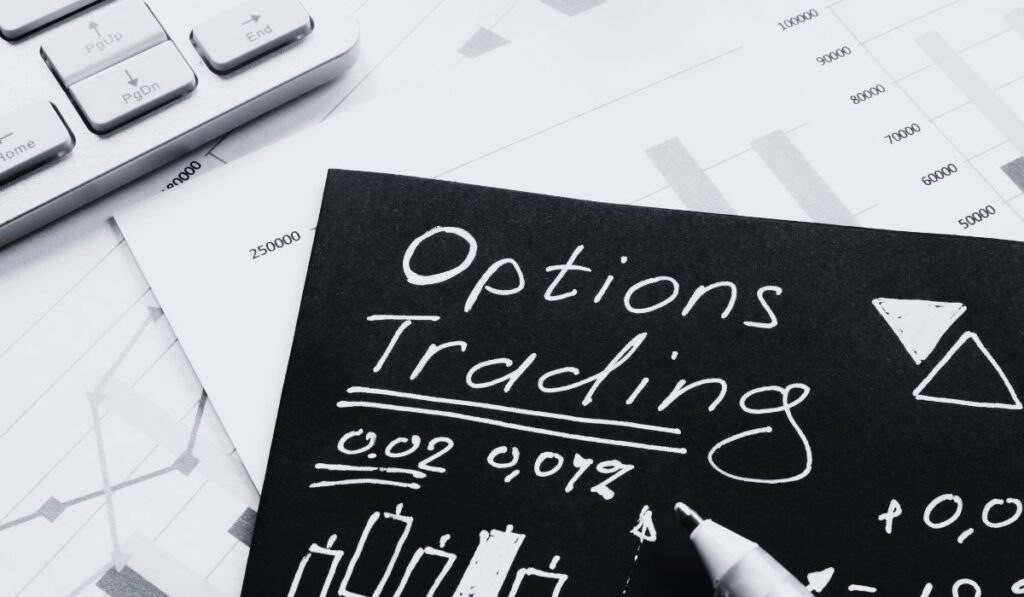Table of Contents
So, How To Make Money Trading For Beginners?
Welcome to the world of trading, where the potential for profit entices many, but the path to success is not a straight line. Trading isn’t just about buying low and selling high; it’s an art, requiring a blend of skill, knowledge, and mindset. Whether you’re dreaming of turning trading into a full-time career or seeking extra income, understanding the fundamentals is crucial. This guide aims to equip you with the essentials, from recognizing the types of trading available to mastering the mindset needed for success.
Understanding the Trading Landscape
Types of Trading: What Are Your Options?
The trading universe is vast, offering several avenues to explore. Each type has its unique characteristics and required skill sets:
- Stock Trading: Dealing with company shares, focusing on corporate performance and market trends.
- Forex Trading: Involving global currencies, it’s dynamic and operates 24/5.
- Cryptocurrency Trading: The newest frontier, dealing with digital currencies like Bitcoin and Ethereum.
- Options and Futures: Where traders speculate on the future prices of assets.
- Commodities Trading: Involves physical goods like gold, oil, or agricultural products.
Each type requires a different approach, and your choice should align with your interests, investment goals, and risk tolerance.
Risk and Reward: The Heart of Trading
Trading is inherently risky, but with risk comes potential reward. The key is to understand and manage these risks effectively. It’s essential to have a clear view of your risk appetite and how much capital you can afford to lose without impacting your financial security.
The Psychology of Trading: Mind Over Money
Trading is as much a psychological endeavor as it is a financial one. Emotions like fear and greed can lead to impulsive decisions, undermining your strategy. Developing a disciplined mindset and emotional resilience is critical for long-term success.
Essential Skills for Successful Traders
Charting Your Course: Technical Analysis Basics
Technical analysis involves studying price charts and patterns to predict future market movements. It’s an essential skill for most traders, especially in short-term strategies like day trading or swing trading.
Fundamental Analysis: Unearthing Market Insights
This involves evaluating economic indicators, company earnings, and industry trends to gauge an asset’s true value. It’s particularly relevant in stock and commodities trading.
Risk Management Strategies: Protecting Your Capital
Effective risk management is the backbone of successful trading. This includes setting stop-loss orders, understanding position sizing, and never risking more than a small percentage of your portfolio on a single trade.
Embracing Patience and Discipline: Traits of a Successful Trader
Patience in waiting for the right trade and discipline in sticking to your trading plan are vital. Overtrading or deviating from your strategy can erode profits and amplify losses.
In the following sections, we’ll delve deeper into each of these areas, helping you build a strong foundation for your trading journey. Remember, trading is not a guaranteed path to wealth, but with the right approach, it can be a rewarding venture.
Choosing Your Trading Market
Stock Market Trading: Bulls and Bears, Oh My!
Stock market trading is like a thrilling rollercoaster. Picture the ‘bulls’ pushing prices up and the ‘bears’ pulling them down. It’s all about buying and selling company shares. The fun part? You get to be part detective, part fortune-teller, trying to figure out which companies will do well and which might not.
Forex Trading: Currency Pairs and Pip Profits
Forex trading is like playing a giant game of “Match the Currency.” You trade pairs of currencies from all over the world, like the US dollar and the euro. The goal? To guess which currency will win the race against the other. And the score is kept in ‘pips’ – tiny changes in currency value that can mean big wins (or losses).
Cryptocurrency Trading: The Digital Gold Rush
Cryptocurrency trading is the new kid on the block. It’s like digital treasure hunting. You trade virtual coins, like Bitcoin or Ethereum, that aren’t controlled by any country. It’s exciting and new, but also a bit like the Wild West – unpredictable and full of adventure.
Commodities and Futures: Trading Tangible Goods
Commodities trading is all about real stuff – like gold, oil, or wheat. You’re betting on whether the price of these physical goods will go up or down. And futures? They’re promises to buy or sell these goods at a set price on a future date. It’s like making a deal today for something you’ll give or get later.
Options and Derivatives: The Art of Contractual Trading
Trading options and derivatives is like playing a strategic board game. You deal in contracts, not actual stocks or commodities. These contracts give you the option (but not the obligation) to buy or sell assets at a set price. It’s a game of strategy and predicting the future.
Getting Started with a Trading Account
Selecting the Right Broker: Your Gateway to the Markets
Finding the right broker is like choosing the right teammate. You want someone reliable, trustworthy, and with all the tools you’ll need. They’re your link to the trading world, so picking the right one is super important.
Demo vs. Live Trading: A Practice Run or Dive Right In?
Starting with a demo account is like playing a trading video game with pretend money. It’s a great way to practice without risk. Live trading, on the other hand, is jumping into the real game, where real money is at stake. It’s exciting but also means you need to be extra careful.
Account Types: Finding the Fit for Your Goals
Just like in a video game, you have different ‘levels’ of trading accounts. Some are for beginners, others for the pros. Choosing the right type depends on how much you know, how much you want to invest, and what you hope to achieve.
Navigating Trading Platforms: User-Friendly or Overwhelming?
Trading platforms can be like navigating a new city – some are easy to get around, others more complicated. They’re the tools you’ll use to trade, so finding one that’s user-friendly and suits your style is key.
Developing a Trading Strategy
Swing Trading: Riding Market Waves
Swing trading is like surfing. You try to catch the big waves (market trends) and ride them for a while, then hop off before they crash. It’s about timing and going with the flow.
Day Trading: Rapid-Fire Decision-Making
Day trading is the trading world’s fast and furious race. You buy and sell super fast, all in one day. It’s exciting and fast-paced, like a video game where quick reactions are key.
Scalping: Small Gains, Quick Trades
Scalping is like playing a game of quick hands. You make lots of super-fast trades to grab small profits here and there. It’s all about speed and staying on your toes.
Position Trading: The Long-Term Approach
Position trading is like planting a garden. You choose your seeds (investments), plant them, and wait patiently for them to grow over time. It’s a slower, more patient way of trading, thinking about the future.
Each of these trading styles has its own fun and challenges. It’s like picking the game you want to play based on what you like and how you like to play.
Technical Tools and Indicators
Candlestick Patterns: Reading Market Sentiment
Candlestick patterns are like the mood rings of the trading world. Each candlestick tells a story about the market’s feelings – whether traders are feeling bullish (positive) or bearish (negative). By learning to read these patterns, you can get a sense of where the market might head next.
Moving Averages: Smoothing Out Trends
Think of moving averages as the GPS of trading. They help you track where the market has been and where it might go. By smoothing out price data over a period, they show a trend’s direction, making it easier to spot opportunities.
RSI, MACD, and Stochastics: Oscillators for Momentum
These tools are like the speedometers of the trading vehicle. They tell you how fast the market is moving and whether it’s running out of gas (losing momentum). RSI (Relative Strength Index), MACD (Moving Average Convergence Divergence), and Stochastics measure the speed and change of price movements, helping you anticipate turns.
Fibonacci Retracement: Unlocking Price Levels
Fibonacci retracement is like a treasure map in trading. It uses math (yes, the Fibonacci sequence from high school!) to predict where prices might find support or resistance. It’s a tool to help you spot potential turning points in the market.
Bollinger Bands: Gauging Market Volatility
Imagine Bollinger Bands as rubber bands around the price of an asset. When the market is calm, the bands contract; when it’s volatile, they expand. They help you understand the ‘mood swings’ of the market, indicating when it might be a good time to buy or sell.
Analyzing Fundamentals
Economic Indicators: What Makes Markets Move
Economic indicators are like the health check-ups of the economy. They include things like unemployment rates, inflation, and GDP growth. By understanding these, you can get a sense of how healthy an economy is and how it might affect the markets.
Corporate Earnings and Reports: Stocks and Financial Health
This is all about digging into a company’s report card. Earnings reports tell you how well a company is doing. Are they making money or losing it? This information can help you decide whether to buy or sell their stock.
Central Banks and Interest Rates: Currency Markets’ Pulse
Central banks are like the doctors of the economy. They adjust interest rates to keep the economy healthy. These changes can make a big splash in currency markets, affecting how much your money is worth around the world.
News and Events: The Impact of Current Affairs
News and events are the wild cards in trading. Things like elections, natural disasters, or big announcements can shake up the markets unexpectedly. Staying informed helps you react quickly to these changes.
Risk Management Strategies
Stop-Loss and Take-Profit Orders: Shielding Your Investments
These are like the safety nets of trading. A stop-loss order automatically sells your asset when it hits a certain low price, preventing bigger losses. A take-profit order does the opposite – it sells when the asset hits a high price, securing your profits.
Position Sizing: The Art of Balancing Risk and Reward
This is about not putting all your eggs in one basket. Position sizing means deciding how much of your money to put into a single trade. It’s a way to manage risk and make sure you’re not overexposed if a trade doesn’t go as planned.
Diversification: Spreading Risk Across Assets
Diversification is like having a variety of different tools in your toolbox. By spreading your investments across different assets (like stocks, bonds, and commodities), you reduce the risk of a big loss if one of them goes down.
Risk-Reward Ratio: Calculating Your Trading Success
This is like the scorecard of your trading strategy. The risk-reward ratio compares the potential profit of a trade to its potential loss. It helps you decide whether a trade is worth taking and keeps your trading decisions disciplined and consistent.
By mastering these technical tools, fundamental analyses, and risk management strategies, you’re setting yourself up for smarter, more informed trading decisions. Remember, trading is part art, part science, and a whole lot of discipline!
Emotions and Trading
Fear and Greed: The Emotional Rollercoaster
Imagine you’re on a rollercoaster, and that’s what trading can feel like sometimes. Fear and greed are the big drops and loops on this ride. Fear might make you sell too soon (oops, there goes a profit!), and greed might make you hang on too long (yikes, now it’s a loss!). Recognizing these emotions is key to not letting them drive your trading decisions.
Trading Psychology: Keeping a Level Head
Keeping a cool head when trading is like being the calm captain of a ship in a stormy sea. It’s all about staying focused and not letting emotions like excitement or panic take the wheel. This means making decisions based on logic and your trading plan, not just feelings.
Common Biases: Overcoming Cognitive Pitfalls
Our brains sometimes trick us, like a magician pulling a rabbit out of a hat. In trading, these tricks (or biases) can lead us to make not-so-great decisions. For example, you might think, “This stock has to go up because it’s been going down for so long!” That’s a bias. Learning to spot and outsmart these biases is a superpower in the trading world.
Building a Trading Plan
Defining Your Goals: What Are You Trading For?
Setting goals in trading is like setting a destination on your GPS. Are you trading to make a quick buck, save for retirement, or just for fun? Knowing your destination helps you choose the right path and stay on track.
Creating a Trading Journal: Tracking Progress and Mistakes
A trading journal is like a diary, but for your trades. Write down what you did, why, and how it turned out. It’s a great way to learn from both your wins and oopsies. Plus, it’s fun to look back and see how far you’ve come!
Setting Rules and Boundaries: Your Roadmap to Success
This is about creating your personal trading rulebook. It might include things like, “I’ll never risk more than 2% of my money on one trade,” or “I’ll always do my homework before buying a stock.” These rules help you stay disciplined and avoid random, risky moves.
Strategies for Making Money
Trend Following: Riding the Market Flow
Trend following is like going with the flow of a river. If the market is moving up, you go with it. If it’s going down, you might go that way too. It’s about spotting a trend and jumping on board, not trying to fight the current.
Counter-Trend Trading: Catching Reversals
This strategy is like trying to catch a falling knife – tricky and a bit daring. You look for signs that a trend is about to reverse and then make your move. It’s about being one step ahead, but it also means you need to be super careful.
Breakout Trading: Seizing Price Movement Opportunities
Breakout trading is like spotting a sprinter ready to burst off the starting line. You’re looking for prices that are about to make a big, fast move up or down. When you see a breakout happening, you jump in to catch the ride.
News Trading: Profiting from Market Events
News trading is all about being quick on your feet when big news hits. Think company announcements, economic reports, or political events. These can shake up the markets, and if you’re fast, you can catch some of the action.
Algorithmic Trading: The Rise of Robots
Algorithmic trading is like having a robot buddy do the hard work. You set up computer algorithms (fancy word for a set of rules) to do the trading for you. They can make decisions super fast, way faster than a human. It’s like having a super-smart, super-speedy trading assistant.
Remember, in the world of trading, knowledge is power, and a cool head wins the game. Ready to dive into the market’s exciting waters?
Trading Challenges and Pitfalls
Overtrading: The Temptation of Constant Action
Overtrading is like eating too much candy – it seems like a good idea at the time, but it can lead to a tummy ache. In trading, this means making too many trades too quickly, thinking more action equals more profit. But this can lead to mistakes and losses. It’s like running a marathon without pacing yourself.
Revenge Trading: Emotional Decision-Making
Revenge trading happens when you try to win back what you lost in a bad trade, kind of like trying to beat a video game level you just lost. It’s trading based on emotion, not logic, and can make things worse. Remember, the market doesn’t care about personal scores!
Lack of Discipline: Sticking to Your Plan
Lack of discipline in trading is like ignoring the rules of the road when driving. If you don’t follow your own trading rules, you might end up in a crash. Sticking to your plan helps you stay focused and avoid impulsive decisions.
Trading Scams and Pitfalls: Protecting Your Capital
Beware of the dark alleys in the trading world. Scams and pitfalls, like too-good-to-be-true schemes or misleading advice, are out there. Always do your homework and remember, if it sounds too good to be true, it probably is.
Realistic Expectations
What’s a Realistic Trading Income?
Setting realistic income goals in trading is like setting a sensible speed on a highway. You won’t go from zero to hero overnight. Most traders see ups and downs, and it takes time and experience to consistently make profits. It’s more of a marathon than a sprint.
The Myth of Getting Rich Quick
The idea of getting rich quick through trading is like finding a pot of gold at the end of a rainbow – more a fairy tale than reality. Trading can be profitable, but it’s not a magic money machine. It takes patience, learning, and a lot of hard work.
Conclusion
Celebrating Your Wins and Learning from Losses: The Trading Journey
Every trader’s journey is full of wins and losses. Celebrate your successes, but also learn from the not-so-great moments. Each trade teaches you something new and makes you a bit wiser on this exciting journey.
Disclaimer and Final Thoughts
Risk Warning: Trading Isn’t a Guaranteed Money Machine
Remember, trading is risky and not a guaranteed way to make money. It’s important to trade with money you can afford to lose and to do your research. Don’t bet the farm on a hunch.
The Ongoing Pursuit of Profit: Your Trading Adventure
Trading is an ongoing learning adventure. It’s a road with twists and turns, ups and downs. Stay curious, stay cautious, and keep learning. Your trading adventure is unique, and every step teaches you something valuable.
Happy trading! Remember, it’s not just about the destination but also about the journey. Keep learning, keep growing, and who knows what peaks you’ll reach in your trading adventure!














